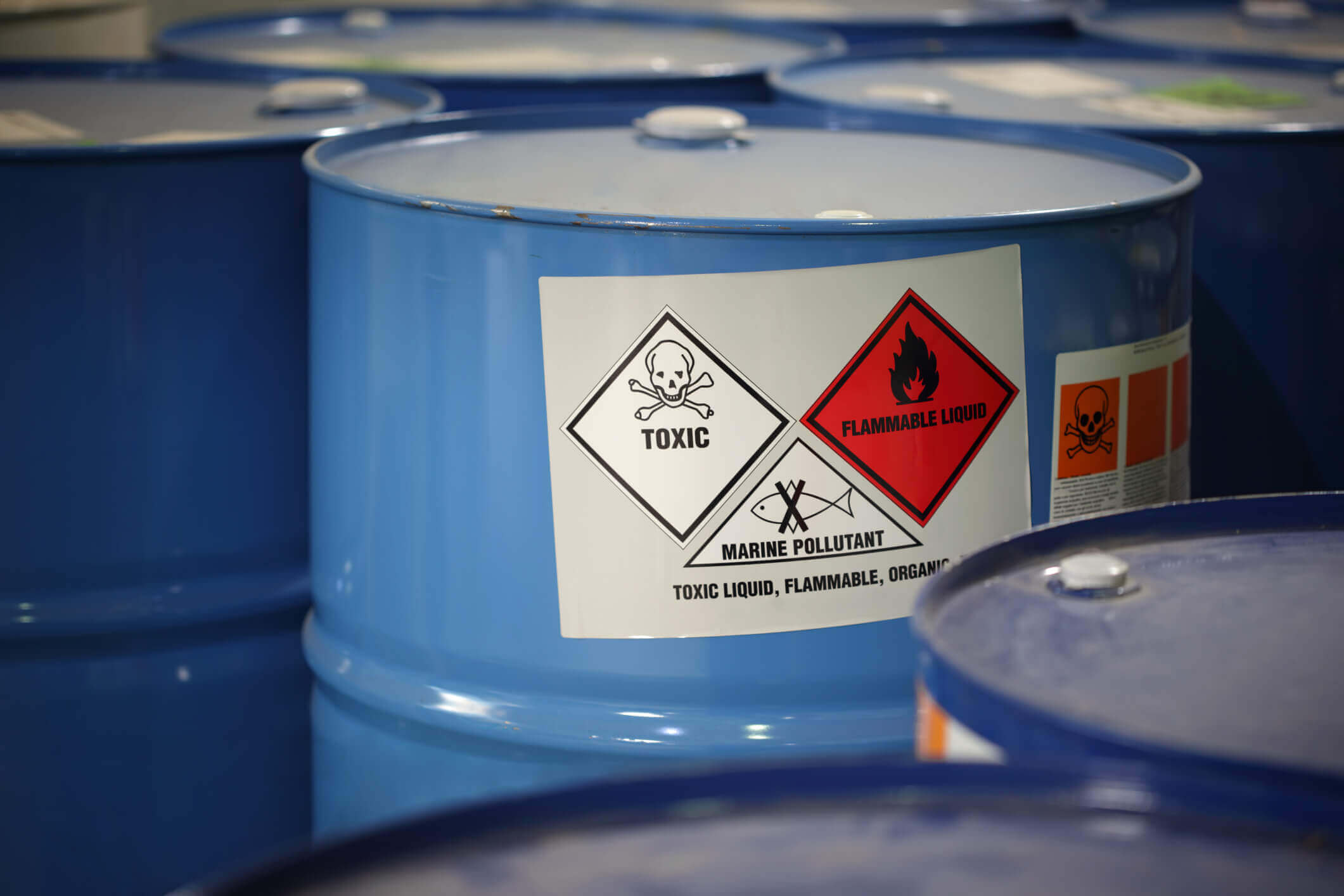On This Page
Asbestos and Mesothelioma
In general, mesothelioma is a rare form of cancer caused only by asbestos exposure. The lungs, stomach, heart, and other organs are lined with tissue called mesothelium. Mesothelioma is a tumor of this tissue, which usually starts in the lungs but can spread to other organs as well. Unfortunately, mesothelioma can take up to 40 years to form and is often found when in its advanced stages, increasing the difficulty of treatment.
Symptoms of mesothelioma include:
- Breathing problems
- Pain under the rib cage
- Weight loss
- Pain and swelling of the abdomen
Treatments exist for the disease, but there is no cure. Annually, 2,597 people die each year due to mesothelioma, and approximately 3,000 others are diagnosed each year.
Another condition that can result from asbestos exposure is asbestosis. Asbestosis is a respiratory disease that can have a severe effect on quality of life. Like mesothelioma, asbestosis symptoms may not occur until many years after asbestos exposure. Symptoms include shortness of breath, lung scarring, loss of appetite, weight loss, dry cough, and chest pain.
There is no cure for asbestosis, and the disease increases the risk of developing lung cancer.
Benzene Exposure
Benzene is a clear, non-corrosive, and highly flammable liquid used primarily to make other chemicals and plastics. The hazardous chemical was classified as a carcinogen (known cancer-causing substance) by the U.S. Department of Health and Human Services in 1980.
Benzene is widely used in the United States and it ranks in the top 20 chemicals for production volume. Unfortunately, workers that are exposed to benzene are at an increased risk of developing life-threatening blood disorders and cancers.
Benzene exposure can occur through inhalation or skin absorption. Short-term, high-level exposure can cause eye and skin irritation, drowsiness, dizziness, unconsciousness, and death. Long-term exposure can increase the risk of blood diseases, such as anemia, and certain blood cancers, especially acute myelogenous leukemia (AML). Other blood cancers linked to benzene exposure include:
- Acute lymphocytic leukemia (ALL)
- Chronic lymphocytic leukemia (CLL)
- Multiple myeloma
- Non-Hodgkin lymphoma
Although some studies have suggested links between benzene and the aforementioned cancers, the evidence is not as strong as the evidence linking the hazardous chemical to AML. In addition, some studies have shown that women may sustain damage to reproductive organs. Women who breathed in high levels of benzene over an extended time suffered from irregular menstrual periods and ovary shrinkage, but it is unknown if it was a direct cause of benzene exposure.
Beryllium Disease
Beryllium is a lightweight, heat-resistant metal that is used in the aerospace, nuclear, and manufacturing industries. It is also present in a number of consumer products including dental appliances, wheelchairs, sports equipment, and electronic devices. Beryllium may be useful in a wide range of industries and settings, but it is also known to cause chronic lung ailments in workers.
Beryllium is categorized by the International Agency for Research on Cancer as a Category 1 carcinogen, which deems the chemical cancer-causing in humans. Other Category 1 carcinogens include asbestos, benzene, and diesel exhaust. Exposure to beryllium fumes and particles has been linked to an increased risk of lung cancer.
When a person is exposed to high levels of beryllium through dust or fumes, they may develop beryllium disease, an ailment that primarily affects the lungs. Beryllium disease has two forms: acute and chronic. The acute form is now rare due to the regulations put forth by workplaces to prevent large quantities of hazardous chemicals from being released into the air. According to the Cleveland Clinic, of those working around beryllium, around 10 percent get sensitized to the metal, and approximately half of those people progress to develop chronic beryllium disease (CBD, or berylliosis).
Beryllium disease may be difficult to diagnose because its symptoms, which mimic those of pneumonia, can sometimes take thirty years or more to appear after exposure. Signs and symptoms of beryllium disease include:
- Skin rash
- Weight loss
- Anorexia
- Heart disease
- Heart enlargement
- Lung cancer
Cancer Caused by Firefighting Foam
Firefighting foam, officially known as aqueous film-forming foam (AFFF), is a specialized foam used by firefighters since the 1950s. The purpose of this foam is to blanket fires, preventing oxygen from reaching and further fueling the flames.
However, the manufacturing of the foam uses dangerous chemicals known as perfluoroalkyl substances (PFAS). PFAS have been linked to various forms of cancers with firefighters developing:
- Kidney (renal) cancer
- Testicular cancer
- Pancreatic cancer
- Bladder cancer
- Leukemia
- Lymphoma
- Neuroendocrine tumors
- Prostate cancer
- Liver cancer
- Breast cancer
- Colorectal cancer (colon and/or rectal cancer)
Major health organizations including the Centers for Disease Control and Prevention (CDC), United States Environmental Protection Agency (EPA), and the American Cancer Society (ACS) have all noted that PFAS may be linked to cancer in firefighters. The EPA has even classified PFAS as “emerging contaminants” that are likely dangerous to human health.
Cancers resulting from the use of AFFF and PFA-containing formats are not limited to firefighters. Other occupations at an increased risk of exposure include airport workers and current and former military servicememebers.
Cancer Among Railroad Workers
A study of 55,000 railroad workers found that workers who operated trains were 40% more likely to develop lung cancer than the general population. The study was able to link the increased cancer risk to diesel exhaust, which contains benzene, a known carcinogen.
Many railroad workers have also been exposed to high levels of asbestos, another known carcinogen. For decades, asbestos was commonly used in sealants, gaskets, brake pads, brake lining, and insulation materials.
Other cancers linked to railroad work include:
- Bladder Cancer
- Bone Cancer
- Colon Cancer
- Kidney Cancer
- Leukemia
- Lung Cancer
- Mesothelioma
- Myelodysplastic Syndrome
- Skin Cancer
A study of 55,000 railroad workers found that workers who operated trains were 40% more likely to develop lung cancer than the general population. The study was able to link the increased cancer risk to diesel exhaust, which contains benzene, a known carcinogen.
Many railroad workers have also been exposed to high levels of asbestos, another known carcinogen. For decades, asbestos was commonly used in sealants, gaskets, brake pads, brake lining, and insulation materials.
Other cancers linked to railroad work include:
- Bladder Cancer
- Bone Cancer
- Colon Cancer
- Kidney Cancer
- Leukemia
- Lung Cancer
- Mesothelioma
- Myelodysplastic Syndrome
- Skin Cancer


























